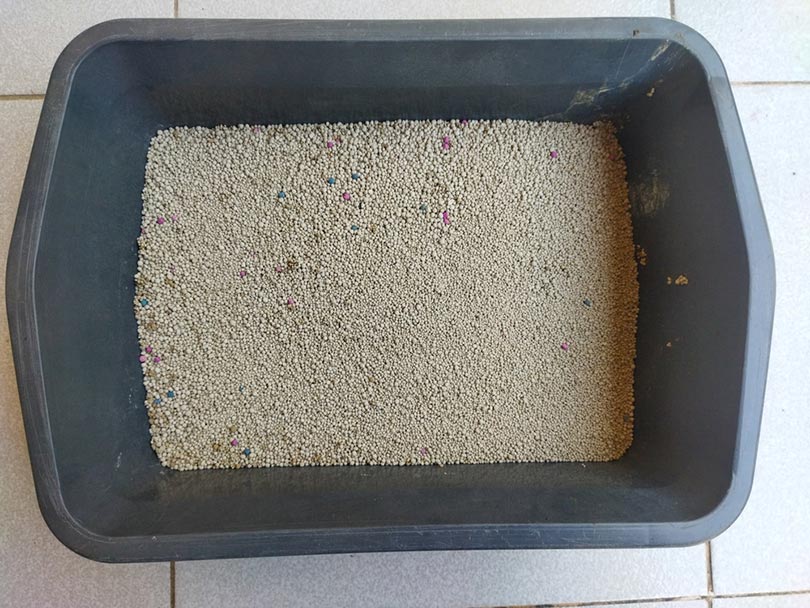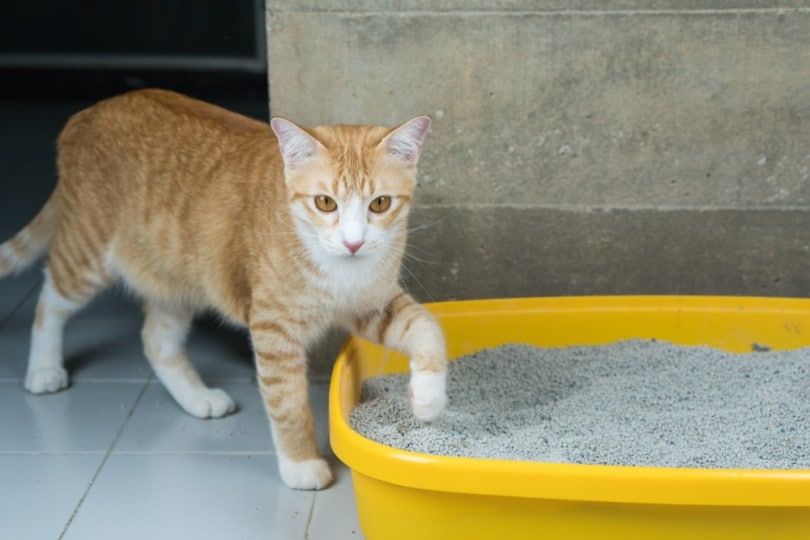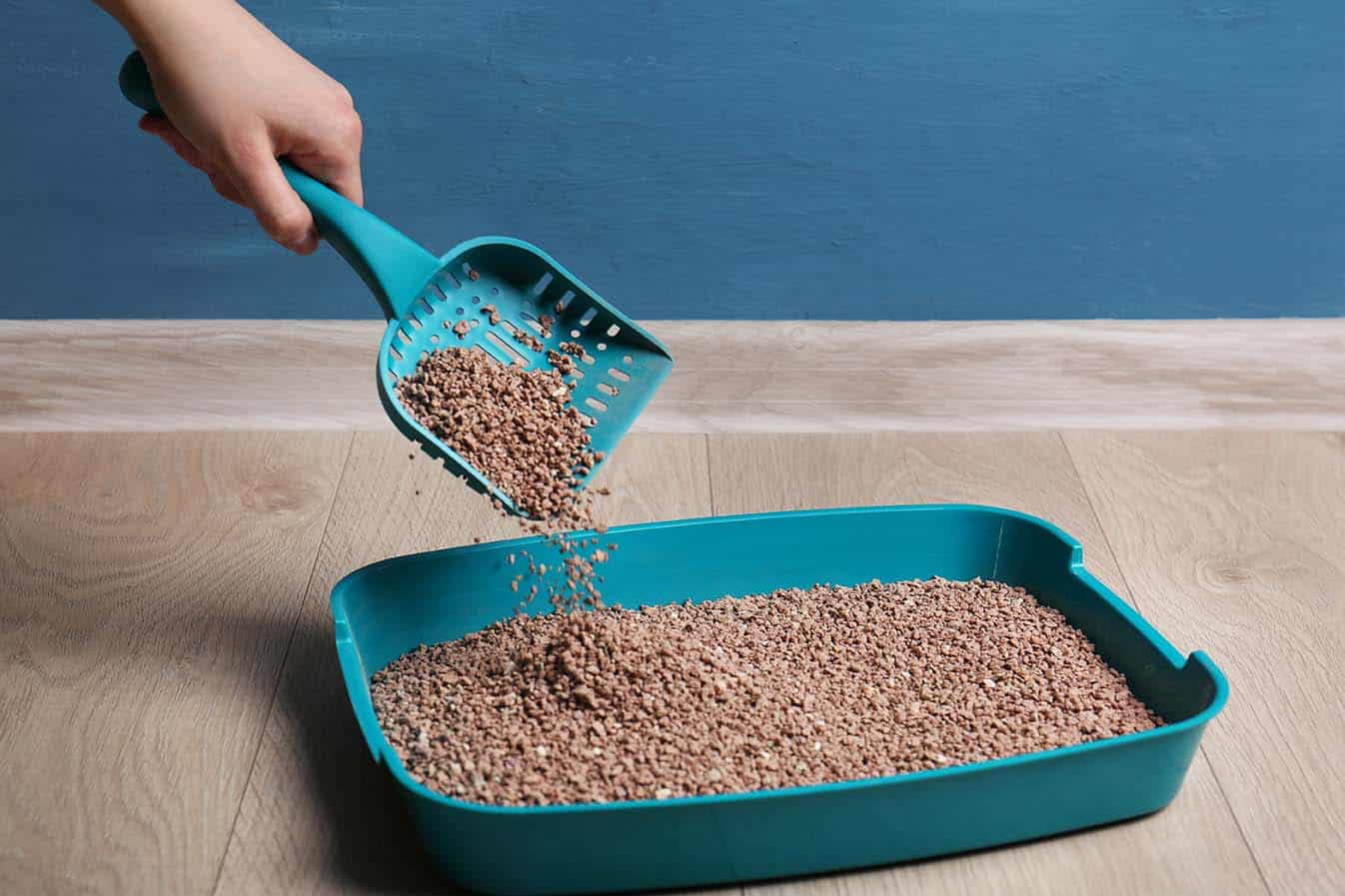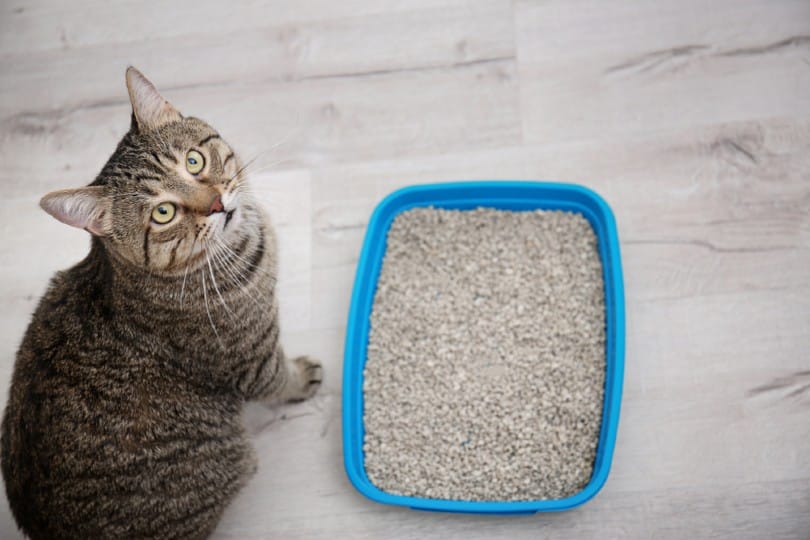Click to Skip Ahead
There are so many types of cat litter on the market that choosing the right one can be a bit of a struggle. Although cat litter comes in a multitude of forms (paper, clay, pine, silica gel, etc.), and some kinds are better than others at keeping odors under control, another factor to consider is whether it should be scented or non-scented.
Both scented and non-scented cat litters have their pros and cons, and in this post, we look at each to help you decide which one would best benefit you, your home, and your cat.
Overview of Scented Cat Litter
Scented cat litter is pretty much what it says on the tin: It’s litter that has been manufactured with added fragrances, with the goal of making your cat’s litter box and its surrounding area less stinky and giving it a more pleasant scent. People who are especially sensitive to bad smells often try this kind of litter to make their cat’s environment a little less pungent.

What Does Scented Cat Litter Smell Like?
There are countless scents available! One of the most common and popular scents is lavender, but you can also find apple, orange, lotus blossom, chamomile, and mountain spring, to name but a few.
Although scented litters certainly smell nicer from the get-go, one issue is that the fragrance may end up in your cat’s fur when they leave the box. You might also start to associate the smell with the litter box, which means you’ll eventually start to perceive it as an unpleasant smell.
What Types of Scented Cat Litter Can You Get?
As with unscented litter, scented litter comes in all different varieties. You can get clumping litter, anti-tracking litter, dust-free litter, hypoallergenic litter, crystal litter, and others.

Is Scented Litter Safe for Cats?
Scented litter is designed to be safe, but that doesn’t mean there aren’t potential issues. Some cats find scented litter too overpowering, which can cause them to become stressed out, so unscented litter would be a better choice for sensitive kitties.
In addition, dust and chemical fragrances from scented litter can cause respiratory irritation and watery eyes in some cats, so there’s always a risk involved in using it.
- Pleasant scent
- Helps mask urine odors
- Variety of scents to choose from
- May make litter scooping more tolerable, especially for odor-sensitive people
- Potential for respiratory irritation
- Some cats can’t tolerate artificial fragrances
Overview of Unscented Cat Litter
Unscented cat litter is basically free of any added scents, though it may still contain things like baking soda or other ingredients that help neutralize bad smells. Some types of unscented litter retain their natural smell, with pine litter being a good example of this.
In short, although neutralizing ingredients may be added or the product has a natural scent, nothing is added to unscented cat litter to create a distinctive scent. As with scented litter, you can find several types, including clay, clumping, pine, silica, and paper litter.

Does Unscented Litter Smell Worse Than Scented Litter?
Of course, scented litter has a very obvious fragrance, but this doesn’t mean that unscented litter smells worse—just more neutral. As mentioned, unscented litters often contain ingredients like baking soda to help absorb odor-causing particles.
Whether litter smells bad—regardless of whether it’s scented or unscented—mostly comes down to the type of litter and the brand. Unfortunately, some kinds of litter are simply less effective at odor control than others. Paper litter in particular and some types of clay litter (especially very cheap ones) can get smelly pretty quickly.
If you're dealing with stubborn smells in your litter box or elsewhere in your house, a good cat litter deodorizer can work wonders.
We recommend Hepper's Advanced Bio-Enzyme Cat Litter Deodorizer, an all-natural litter additive that fights odors using bio-enzymes. This effective deodorizer is fragrance-free and works on all types of cat litter. It's also effective anywhere you have lingering odors, including diaper pails, garbage cans, and kennels! At Catster, we’ve admired Hepper for many years and decided to take a controlling ownership interest so that we could benefit from the outstanding designs of this cool cat company!
Is Unscented Litter Safe for Cats?
Non-dusty unscented litter is a great choice safety-wise, as long as it’s changed regularly and the litter box is kept nice and fresh. It’s best to avoid dusty litter to keep potential respiratory irritation at bay for both you and your cat.
- Natural/neutral scent less likely to deter cats
- Effective odor control when using quality brands
- Great choice for cats sensitive to artificial fragrances
- Variety of types available
- Very cheap/low-quality unscented litter (like clay) can be dusty/smelly
- Natural scent may be too mild for some
FAQ
Is Scented or Unscented Litter Better for Cats?
Having had a good experience with several types of unscented litter ourselves and having a personal preference for more natural scents, we’re edging a bit more toward recommending unscented litter.
We’re also a tad wary about the potential for respiratory irritation, which is linked to scented litter more than unscented, though there’s a chance of this happening with dusty unscented litter too.
That said, it really depends on your preferences and which one works best for you and your home. While some people and cats may hate the smell of artificial fragrances, it may not pose any problems at all for others. The same goes for litter with a natural scent.
When Should I Use Unscented Litter?
If your cat is sensitive to artificial fragrances, unscented litter is the way to go. Furthermore, if your cat has a penchant for rolling in fresh litter prior to using it, go for unscented to prevent them from getting covered in a floral or fruity smell and reduce the risk of skin irritation.

When Should I Use Scented Litter?
If you prefer the fragrance of scented litter and your cat isn’t sensitive to it, feel free to go ahead and use what works for you.
Can Cats Be Allergic to Litter?
Yes. Dust from cat litter can cause allergic reactions and worsen asthma in cats. Allergy signs include sneezing, coughing, wheezing, watery eyes, red eyes, itchy skin, and facial swelling. If you suspect that your cat’s litter is causing allergies or you spot signs of asthma, take your pet to a vet to get checked out and find out what kind of litter would work better for them.
Is There Less Cleaning Involved If I Use Scented Litter?
No, the litter box still needs to be scooped and cleaned regularly to avoid the buildup of bacteria and nasty odors. There’s no difference between scented and unscented litter when it comes to scooping frequency.
Conclusion
So, there’s good and bad to both scented and unscented cat litters. Scented cat litter smells good and appeals to people who can’t stand even the faintest litter box smell, whereas unscented litter is more natural and can effectively control odors—as long as you’re using a good brand.
We hope that you’ve found this comparison useful and now have a better idea of which kind of litter would work best for you and your feline friend.
- See also: What Is the Worst Cat Litter?
Featured Image Credit: Svetlana Rey, Shutterstock (L), Africa Studio, Shutterstock (R)















